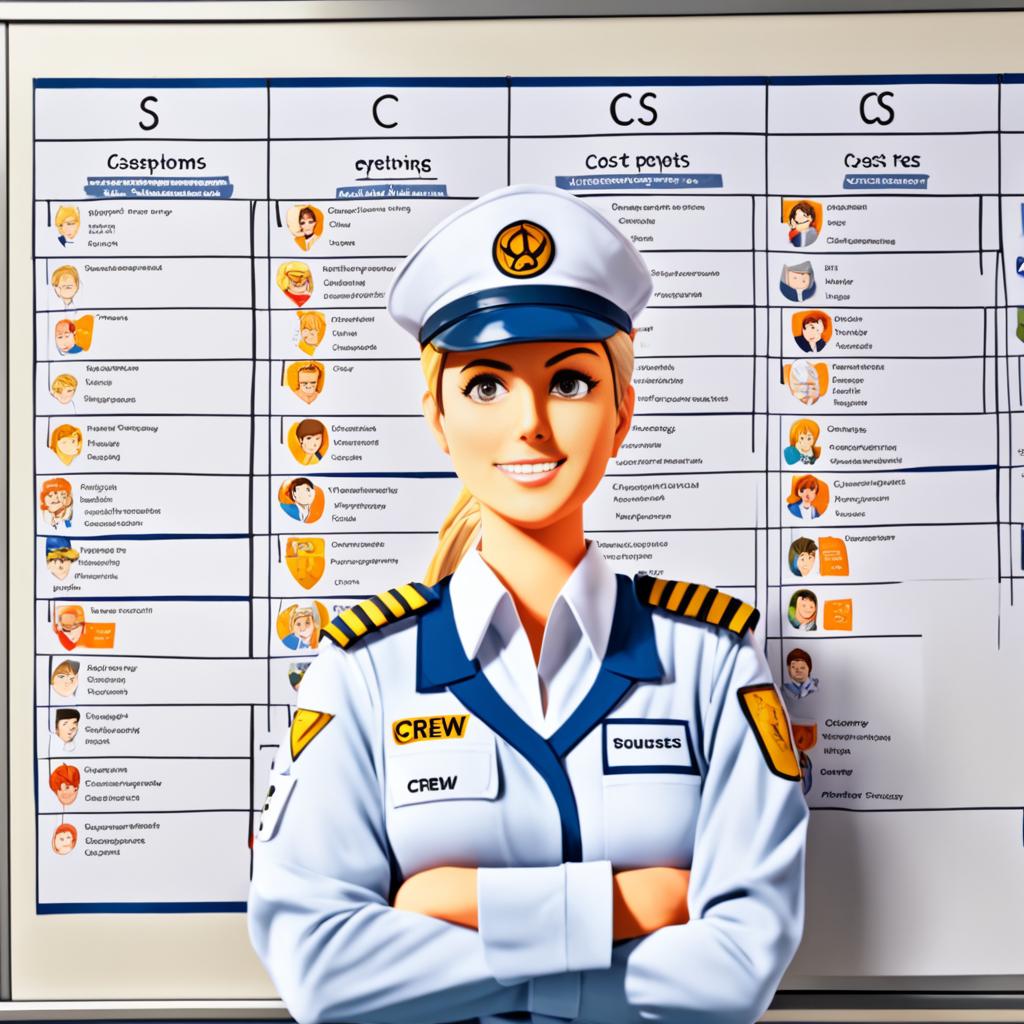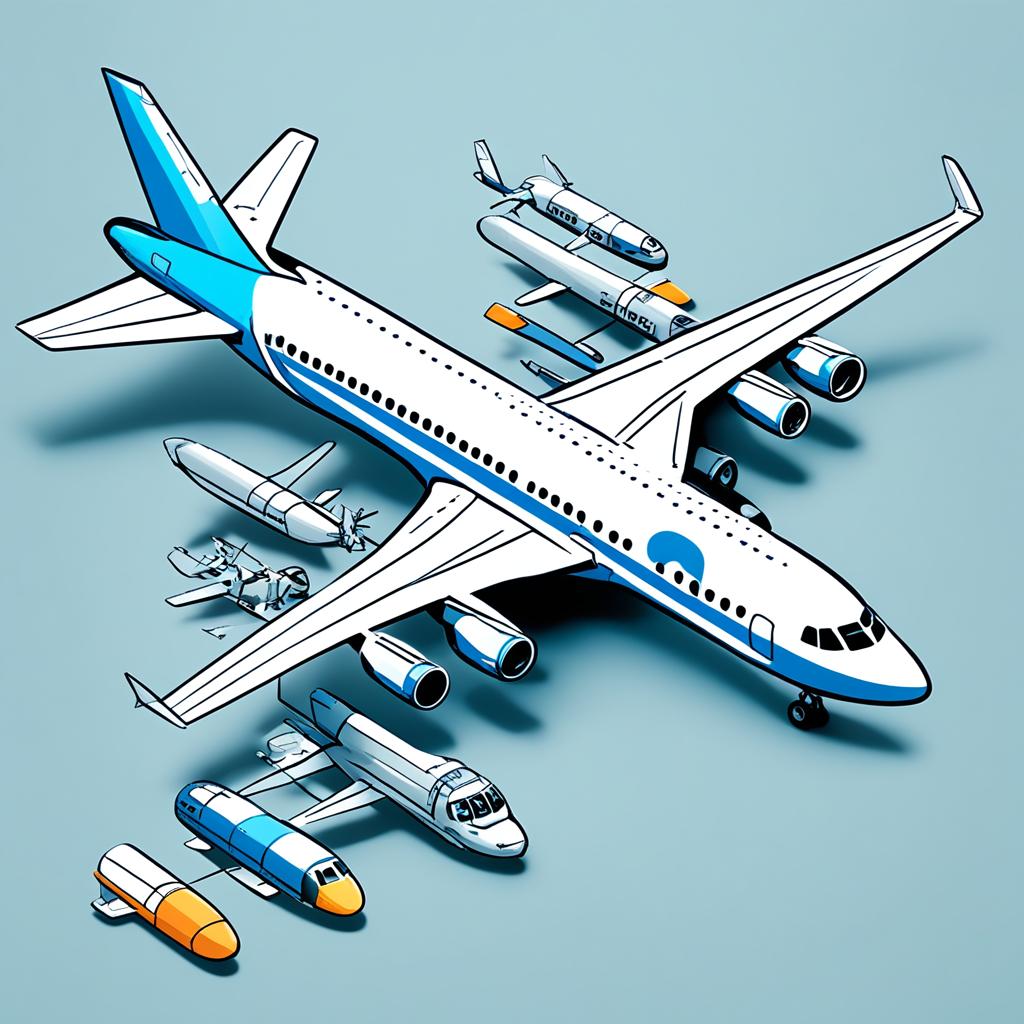Have you ever wondered how airlines determine ticket prices? Or how they manage their day-to-day operations to ensure smooth and efficient services? Well, the answer lies in understanding the variable costs associated with running an airline.
Variable costs are the expenses that fluctuate depending on how much the aircraft are used. They directly impact both ticket prices and the overall operations of airlines. By understanding these variable costs, airlines are able to effectively manage their expenses and make informed decisions regarding pricing and operations.
So, what exactly are these variable costs and how do they affect airlines? Let’s dive deeper into each of them and explore their impact on ticket prices and operations.
Fuel Prices
Fuel prices are a significant variable cost for airlines. The cost of aviation gasoline, jet fuel, and other fluids consumed by aircraft can have a profound impact on the overall expenses of airlines. Fluctuations in fuel prices can be influenced by global oil prices, geopolitical events, and supply and demand dynamics in the market.
Airlines closely monitor fuel prices to effectively manage this variable cost and optimize fuel consumption. Strategies such as using fuel-efficient aircraft and implementing fuel-saving procedures during flights can help mitigate the impact of fuel prices on airlines’ operating expenses.
By staying informed about fuel prices and employing fuel management strategies, airlines can navigate the challenges posed by this variable cost and enhance their financial stability. Effective fuel cost management plays a crucial role in ensuring airlines remain competitive while providing affordable fares to passengers.
Maintenance Costs

When it comes to managing expenses, maintenance costs play a crucial role for airlines. These costs are a significant part of variable costs that fluctuate based on the usage and condition of the aircraft. Understanding and effectively managing maintenance costs is essential for airlines to ensure the safety, reliability, and profitability of their operations.
Maintenance costs in the airline industry include both scheduled and unscheduled maintenance activities. Scheduled maintenance is performed on a calendar interval basis to maintain the airworthiness of the aircraft. This includes routine inspections, component replacements, and system checks. On the other hand, unscheduled maintenance arises from unexpected issues or repairs needed to keep the aircraft in optimal condition.
The extent of maintenance required can vary depending on factors such as the type of aircraft and its age. Newer aircraft may require less frequent and less extensive maintenance compared to older ones. Additionally, the type of aircraft, such as narrow-body or wide-body, can also impact maintenance costs.
Airlines invest in comprehensive maintenance programs to minimize disruptions and ensure the safety and reliability of their fleet. These programs include regular inspections, ongoing maintenance training for the maintenance crews, and the use of advanced diagnostic tools and technologies to identify and address maintenance issues proactively.
By effectively managing maintenance costs, airlines can optimize their expenses and improve overall operational performance. This includes implementing strategies to increase aircraft reliability, reduce downtime, and minimize the need for costly unscheduled maintenance. Moreover, airlines can negotiate favorable maintenance contracts with service providers to ensure cost-efficiency.
Optimizing maintenance costs not only contributes to the financial sustainability of airlines but also helps them maintain a competitive edge in the market. By keeping maintenance costs in check, airlines can offer competitive ticket prices, attract more passengers, and provide a superior travel experience.
| Maintenance Activities | Cost Impact |
|---|---|
| Scheduled Maintenance | Planned and budgeted for, but can be influenced by unexpected findings |
| Unscheduled Maintenance | Unpredictable costs that can arise from unexpected issues or repairs |
| Type of Aircraft | Can impact both scheduled and unscheduled maintenance costs |
Crew Costs

Crew costs are a significant component of variable costs for airlines. As airlines operate their aircraft, crew members are essential for ensuring smooth operations and providing excellent customer service. These crew costs include travel expenses, subsistence allowances, overtime charges, and wages of crew members who are hired on an hourly or part-time basis.
When managing crew costs, airlines need to optimize crew scheduling to minimize unnecessary expenses. By carefully planning and coordinating crew shifts, airlines can reduce overtime charges and maximize crew utilization. Additionally, implementing efficient crew management systems helps streamline crew operations and reduces administrative costs associated with crew scheduling and payroll.
By effectively managing crew costs, airlines can control their variable expenses and improve their overall operational efficiency. This allows airlines to allocate resources more strategically, invest in passenger experience enhancements, and remain competitive in the industry.
Lease Costs

In the aviation industry, lease costs are a critical variable cost that airlines consider when making decisions about their fleet. Instead of purchasing aircraft outright, airlines have the option to lease them for a specified period. This flexibility allows airlines to adjust their fleet size and capacity based on market demand without incurring the high upfront costs associated with purchasing aircraft.
Lease costs vary depending on several factors, including the type of aircraft, lease duration, and prevailing market conditions. Typically, lease costs are based on flight hours or a length of time. By leasing aircraft, airlines can effectively manage their variable costs and optimize their operations.
When considering fleet expansion or renewal, airlines carefully weigh the benefits and drawbacks of leasing versus purchasing. While leasing provides greater operational flexibility and lower upfront costs, it may result in higher long-term expenses. Ultimately, airlines evaluate the financial implications and operational requirements to make informed decisions regarding their fleet strategy.
Advantages and Disadvantages of Leasing Aircraft
Leasing aircraft offers numerous advantages for airlines:
- Lower upfront costs: Leasing allows airlines to avoid the significant upfront capital expenditure required for purchasing aircraft.
- Flexibility: Leasing provides airlines with the ability to scale their fleet according to market demand, adding or removing aircraft as needed.
- Access to new technologies: Leasing enables airlines to access the latest aircraft models and technologies without the need for continuous fleet renewal.
- Reduced administrative burden: Aircraft leasing often includes maintenance and insurance services, reducing the administrative burden for airlines.
However, leasing aircraft also has its drawbacks:
- Higher long-term costs: While leasing may result in lower upfront costs, the cumulative lease payments over time can be higher than the cost of purchasing an aircraft.
- Limited customization options: Leased aircraft may have limited customization options compared to owned aircraft.
- Dependency on lessors: Airlines are reliant on the lessors’ ability to maintain and provide the leased aircraft.
- Restrictions on usage: Leasing contracts may impose limitations on aircraft usage, such as geographical restrictions or maximum flight hours.
Case Study: American Airlines
American Airlines, one of the largest airlines globally, utilizes the strategy of leasing aircraft to supplement its fleet. By leasing aircraft, American Airlines can effectively manage its variable costs and respond to changing market conditions. Leasing provides the airline with operational flexibility and allows it to adapt its fleet capacity based on demand fluctuations. This strategy enables American Airlines to optimize its cost structure and maintain its competitive position in the industry.
In conclusion, lease costs are a significant variable cost for airlines. By leasing aircraft, airlines can adjust their fleet size and capacity to match market demand without the high upfront costs of purchasing. While leasing offers operational flexibility, it may entail higher long-term expenses. Airlines carefully evaluate the advantages and disadvantages of leasing when making fleet decisions. American Airlines serves as a notable example of an airline successfully incorporating leased aircraft into its fleet strategy.
Landing Fees
Landing fees are a crucial component of the variable costs airlines face when operating at different airports. These fees vary depending on the airport and can have a significant impact on an airline’s expenses.
Each airport sets its own landing fee structure, which considers factors such as the size of the aircraft, duration of the landing, and the services provided by the airport. Airlines carefully evaluate landing fees when planning their route network and selecting airports for their operations.
Effectively managing landing fees is essential for airlines to optimize their route network and minimize operating costs. By strategically choosing airports with lower landing fees or negotiating favorable fee structures, airlines can reduce their variable costs and improve their financial performance.
Furthermore, understanding the variation in landing fees between different airports allows airlines to make informed decisions about route profitability and potential market opportunities. By factoring in landing fees when evaluating new routes, airlines can ensure that the revenue generated outweighs the associated costs.
In conclusion, landing fees are an integral part of the variable costs airlines face in their operations. To achieve optimal financial performance, airlines must carefully consider these fees when selecting airports for their operations and continuously monitor and manage them effectively.
Fuel and Other Fluid Costs
Fuel and other fluid costs are significant variable costs for airlines. These costs include the expenses associated with aviation gasoline, jet fuel, engine oil, hydraulic fluids, and water-methanol. Fuel and other fluid costs are directly related to the amount of flying time and aircraft usage.
Airlines continuously monitor fuel consumption and other fluid usage to optimize fuel efficiency and reduce costs. Implementing fuel-saving measures and adopting more fuel-efficient aircraft can significantly impact fuel and other fluid costs for airlines.
Optimizing fuel and fluid costs not only helps airlines manage their variable expenses but also contributes to environmental sustainability. By reducing fuel consumption and minimizing fluid usage, airlines can lower their carbon footprint and support initiatives for a greener aviation industry.
Advantages of Optimizing Fuel and Fluid Costs
- Cost Reduction: Efficient fuel and fluid management directly translates to lower variable costs for airlines, improving profitability in a highly competitive market.
- Sustainability: By reducing fuel consumption and minimizing the use of other fluids, airlines can contribute to environmental conservation and mitigate the impact of air travel on climate change.
- Flight Operations: Optimizing fuel and fluid costs enhances operational efficiency, allowing airlines to plan routes effectively, improve flight schedules, and meet customer demands more efficiently.
- Competitive Pricing: Efficient fuel and fluid management enable airlines to offer competitive ticket prices, attracting more passengers and boosting customer satisfaction.
| Strategies for Optimizing Fuel and Fluid Costs | Benefits |
|---|---|
| Investing in fuel-efficient aircraft | – Reduces fuel consumption – Lowers fuel costs – Enhances environmental sustainability |
| Implementing fuel-saving procedures and practices | – Improves flight efficiency – Minimizes fuel usage – Enhances operational performance |
| Monitoring and analyzing fuel consumption data | – Identifies fuel consumption patterns – Enables targeted optimizations – Enhances cost control |
| Training pilots and crew on fuel-efficient practices | – Encourages fuel-conscious behavior – Reduces fuel wastage – Maximizes fuel efficiency across flights |
By implementing these strategies and closely monitoring fuel and fluid usage, airlines can effectively manage their variable costs, improve their financial performance, and contribute to a sustainable aviation industry.
Impact on Ticket Prices and Operations
Variable costs play a crucial role in determining ticket prices and shaping the operational decisions of airlines. When airlines set their ticket prices, they must carefully consider these variable costs to maintain profitability and stay competitive in the market. Fluctuations in fuel prices, maintenance costs, crew costs, lease costs, landing fees, and fuel and other fluid costs directly influence the overall operational expenses of airlines.
By effectively managing these variable costs, airlines can optimize their operations, enhance efficiency, and offer competitive pricing to attract passengers. Fuel prices, for example, can significantly impact the cost of operations, as the cost of aviation gasoline and jet fuel is directly tied to the amount of flying time and aircraft usage. Similarly, maintenance costs for scheduled and unscheduled maintenance activities can vary based on factors such as aircraft type, age, and the extent of maintenance required.
Understanding the impact of these variable costs allows airlines to maintain financial sustainability and achieve success in the industry. Effective management of variable costs enables airlines to make informed decisions about pricing and operations, ultimately benefiting both the airline and its passengers. By carefully monitoring and optimizing these variable costs, airlines can navigate the challenges of the constantly evolving aviation landscape while providing quality service and value to their customers.
FAQ
Q: What are variable costs for airlines?
A: Variable costs for airlines are the costs that vary depending on how much the aircraft are used. These costs have a direct impact on ticket prices and the overall operations of airlines.
Q: How do fuel prices affect airlines as a variable cost?
A: Fuel prices are a significant variable cost for airlines. The cost of aviation gasoline, jet fuel, and other fluids consumed by aircraft can have a significant impact on the overall expenses of airlines.
Q: What are maintenance costs as a variable cost for airlines?
A: Maintenance costs are another important variable cost for airlines. These costs include both scheduled and unscheduled maintenance activities to ensure the airworthiness of the aircraft.
Q: How do crew costs vary as a variable cost for airlines?
A: Crew costs are variable costs that vary according to aircraft usage. These costs include travel expenses, subsistence allowances, overtime charges, and wages of crew members hired on an hourly or part-time basis.
Q: What are lease costs as a variable cost for airlines?
A: Lease costs are variable costs that arise when airlines choose to lease aircraft instead of purchasing them outright. The cost of leasing an aircraft is often based on flight hours or a length of time.
Q: How do landing fees impact airlines as a variable cost?
A: Landing fees are variable costs that airlines incur when landing their aircraft at different airports. Each airport sets its own landing fee, which can vary widely based on factors such as the size of the aircraft, the duration of the landing, and the services provided by the airport.
Q: What are fuel and other fluid costs as variable costs for airlines?
A: Fuel and other fluid costs are significant variable costs for airlines. These costs include the expenses associated with aviation gasoline, jet fuel, engine oil, hydraulic fluids, and water-methanol.
Q: How do variable costs for airlines impact ticket prices and operations?
A: Variable costs for airlines have a direct impact on ticket prices and operational decisions. Airlines need to consider these variable costs when determining their ticket prices to ensure profitability and competitiveness in the market. The fluctuation in fuel prices, maintenance costs, crew costs, lease costs, landing fees, and fuel and other fluid costs directly affects the overall operational expenses of airlines.
